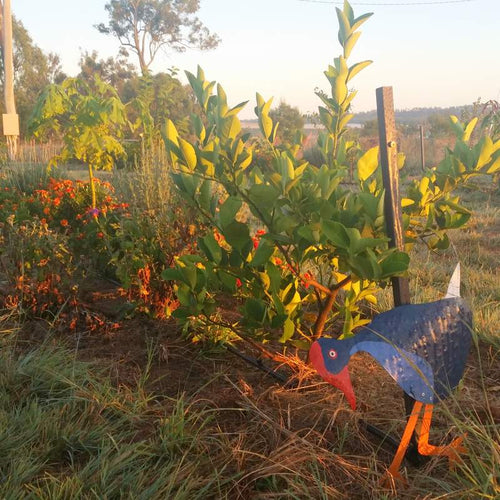Permaculture - Use and value renewable resources
In his book Permaculture: Principles and Pathways beyond Sustainability (affiliate link), David Holmgren, one of the founders of permaculture, has written about 12 design principles. The fifth permaculture principle is use and value renewable resources. In this post I summarise this chapter and give examples from my own experience.
| Trees are the ultimate solar energy converter |
What is a renewable resource?
The first thing I thought of was solar and wind energy, but as I read this chapter I realised that there were so many other renewable resources that we use on a daily basis, without even thinking about it.
A renewable resource is a resource that regenerates or doesn’t get used up. Of course this all depends on timeframes. We usually think of coal and oil as non-renewable, but over millions of years they will eventually regenerate, but we will have used up our current supply by then. At the other end of the scale, the ultimate renewable resource is one that is non-consuming, for example, we can make use of the shade of a tree without ever using it up.
The two renewable resources that are discussed in the most detail in this chapter are trees and animals. Trees are an excellent renewable resource because they are available at virtually no cost to anyone who has space to grow them. They can be used for energy, building fences, houses, furniture, they are continually adding fertility to the soil through leaf drop, they stabalise slopes, provide shade and homes for wildlife. Certain trees can also provide food and medicine for humans and protection from fire.
Animals can also be renewable resources, providing both food and energy. David uses horses and bullocks as examples of using animal power to get work done, but I don’t have much experience with these (maybe I will train a bullock team one day though). Chickens and milking cows are my thing! Our chickens provide us with meat, eggs, lawn mowing and fertility. The cows also provide milk, meat, lawn mowing and fertility. T
he only thing missing from this discussion is the non-renewable inputs required to “run” these animals. We might not have to top them up with diesel directly, but as we feed them both grain that is grown somewhere else, which means someone else is topping up their tractor and we have to drive to pick up the feed. We really need to consider how we close this gap and make our animals truly renewable.
What about non-renewable resources?
David explains that renewable resources are like interest and non-renewable resources are capital. We need to be very careful how we use our capital and shouldn’t just wasting it (for example wasting oil by making throw-away plastic junk that just ends up in landfill, or worse, waterways).
Non-renewable resources have a place, but should be used more to set up a system than as an integral part of an ongoing system. For example, we use our tractor and slasher to mow the grass in some paddocks to help improve fertility. Eventually we will get the point where the cattle graze the grass and we don’t have to use the tractor. Also using concrete for building a permanent structure, if its going to last a long time and require little maintenance, is a good use of a non-renewable resource.
What about solar panels?
This chapter gives an interesting perspective on solar panels, as a lesson for relying too heavily on technology and non-renewable resources to assist us to harness renewable resources. Solar panels require energy and non-renewable resources to produce, including the resources and energy to manufacture them and transport them (usually from China) to our houses. However the emissions and energy use associated with the production of solar panels are not significant compared to other forms of electricity generation.
I think David’s point is that, even though solar is better than other forms of electricity, maybe we should be changing our lifestyle more drastically so that we don't even rely on electricity to such an extent. The main theme of this chapter is that if there is a natural solution it is always preferable to a technological solution, as it will always be more accessible and produce less waste. We can't assume that just because a new technological solution is better than the other available technologies, that it is the best solution overall.
The main criticism on renewable resources (in the media) is that they are "intermittent". I find that funny, as nature is intermittent. Our egg supply, our milk supply, our tomato supply are intermittent, so why shouldn't our use of resources be the same? Learning to live with what you have, rather than what you want is all part of living within nature's cycles.
Having said all that, we are certainly far from perfect, we are currently grid-connected because Pete's welders don't run well on off-grid solar! We are planning to eventually put some panels on the roof of our shed to offset all our chest freezers. So that means the majority of our electricity is coming from coal and/or gas. We have lots of trees though, so we are both keen on setting up a wood-fired generator one day.
Reading this chapter and all the lovely things about trees just made me so happy that we chose our tree-covered property! Part of all this permaculture journey is seeing ways to reduce resource consumption in general and being more clever about using what we have, at this we can only strive to improve :)
So what do you think? How do you use renewable resources in your life? And do you try to regulate how you use non-renewables?
Find out more about Permaculture using these books (affiliate links):
And the other posts in this series:




















Leave a comment